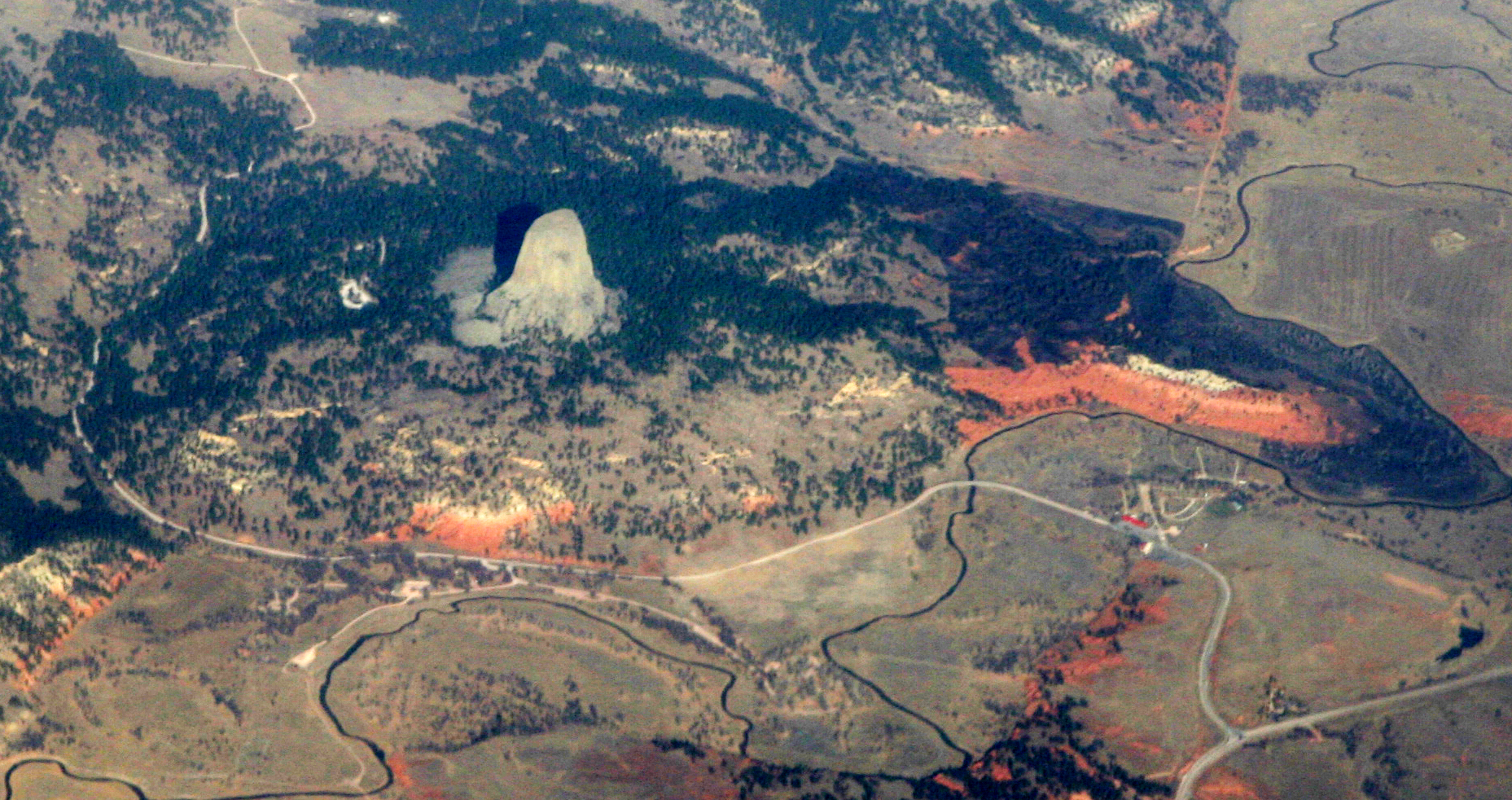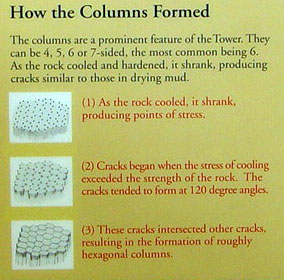Well, this is the tower that is where the climax of the movie took place so we went there expecting to be able to climb to the top. Wrong. Here's the only way to get to the top....
Of course, you could "climb" to the top using the scale model in the Visitor's Center....
Seriously, this is an amazing tower/mountain/rock. As we drove to it, we got a quick glimpse of it in the distance.
...and ever closer....these buffalo and cows cooperated perfectly.
As you enter the park, you drive around the back side (or west side) where you can take a guided hike (or your own hike) around the base of the tower. It's rather spellbinding...you cannot take your eyes off of it.
| This is looking east from the Visitor's Center...pretty cool huh? |
 |
| Here's a great aerial photo showing where it's located in the surrounding area. |
| Looking from the east. The sun is already on the west side so you only see it here in the shade. |
| As we walked around, the ranger pointed out a very large part of the tower that had broken off. |
 | |
| The columns themselves are very interesting....check out this poster. |
 |
| Yikes ! |
| This is what the base of the tower looks like....all the rocks that have fallen over the centuries. Can you imagine how large this tower used to be? |
| You are allowed to climb over the rocks to get to the base but it's rather difficult and takes a LONG time. |
| One last view looking straight up. |
So..how was it formed? There are several theories....you can read them here if you're interested....
How the Tower is Formed: An Ongoing Debate
Geologists agree that Devils Tower was formed by the intrusion (the forcible entry of magma into or between other rock formations) of igneous material. What they cannot agree upon is how that process took place and whether or not the magma reached the land surface.
Numerous ideas have evolved since the official discovery of Devils Tower. Geologists Carpenter and Russell studied Devils Tower in the late 1800s and came to the conclusion that the Tower was indeed formed by an igneous intrusion. Later geologists searched for more detailed explanations.
In 1907, scientists Darton and O’Hara decided that Devils Tower must be an eroded remnant of a laccolith. A laccolith is a large, mushroom–shaped mass of igneous rock which intrudes between the layers of sedimentary rocks but does not reach the surface. This produces a rounded bulge in the sedimentary layers above the intrusion. This idea was quite popular in the early 1900s when numerous studies were done on a number of laccoliths in the Southwest.
Other ideas have suggested that Devils Tower is a volcanic plug or that it is the neck of an extinct volcano. Although there is no evidence of volcanic activity - volcanic ash, lava flows, or volcanic debris - anywhere in the surrounding countryside, it is possible that this material may simply have eroded away.
The simplest explanation is that Devils Tower is a stock—a small intrusive body formed by magma which cooled underground and was later exposed by erosion.
The magma which formed Devils Tower cooled and crystallized into a rock type known as phonolite porphyry. It is a light to dark-gray or greenish-gray igneous rock with conspicuous crystals of white feldspar. Hot molten magma is less dense and occupies more volume than cool hardened rock. As the rock cooled, it contracted, forming hexagonal (and sometime 4-, 5- and 7-sided) columns separated by vertical cracks. These columns are similar to those found at Devil’s Postpile National Monument in California but those at Devils Tower are much larger.
http://www.nps.gov/deto/naturescience/geologicformations.htm
and here's a more complete write-up.
http://en.wikipedia.org/wiki/Devils_Tower
http://www.nps.gov/deto/index.htm
More photos that we took are here...
https://plus.google.com/photos/100376105788369441882/albums/5962823733295858881
We went twice up to see the tower. We have a National Pass so the entrance fee was free for us. The surrounding country is gorgeous so the ride up and back was well worth the trip from town....maybe 20-30 minutes each way. Oh, there is also one of the best Prairie Dog "parks" we've seen.
http://www.nps.gov/deto/naturescience/prairiedogs.htm
The tower is spectacular and, as we said earlier, we just sat and stared at it. Great place to visit. Now we can check this place off our list.


